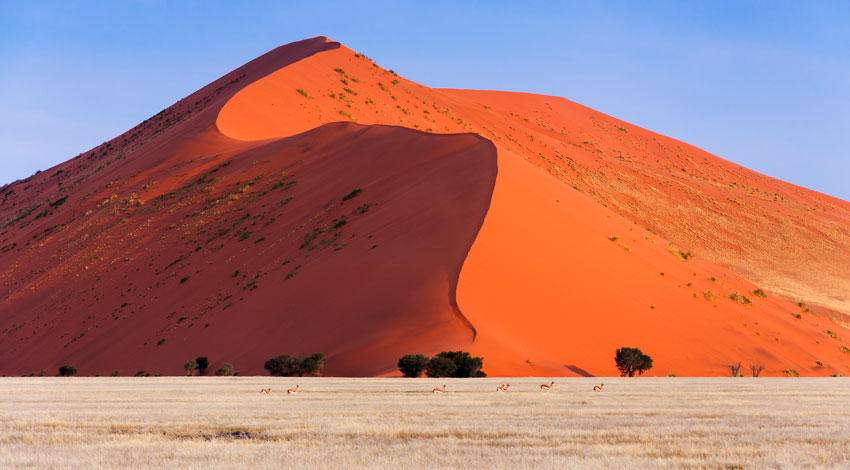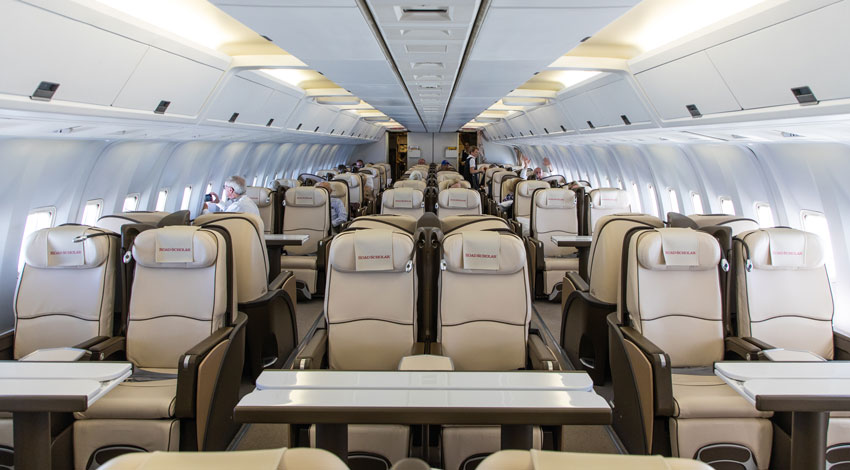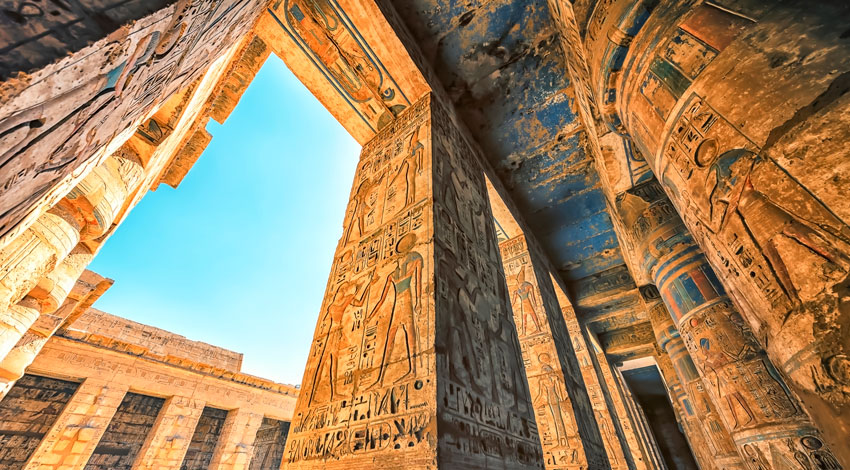Road Scholar Trip Lab: President’s Journey to Africa by Private Plane
Have you dreamed of truly experiencing Africa, circling the continent and exploring its wilds, wonders and absorbing history? We have, too — and we can’t imagine a better way than by private plane. To get a feel for what it’s like to embark on such a life-changing journey, we asked Chief Program Officer, Maeve Hartney, to give us an insider’s take on the experience.

1. Africa is such a vast and incredibly varied continent — what are some highlights that make this learning adventure truly special?
You really get a taste of what Africa has to offer – UNESCO World Heritage sites like the Namib Sand Sea in Namibia, including the Sossusvlei dunes; Cape Floral Region in South Africa, which includes Kirstenbosch Botanical Gardens, Table Mountain and the Cape Peninsula; Victoria Falls in Zimbabwe; Ngorongoro Crater and Serengeti National Park in Tanzania.
2. Describe what it’s like on the plane. What do people do during a flight that’s perhaps five or six hours long?
The plane is quite the community! It’s a 767-300, seats a maximum of 46 participants and feels very spacious with seat configurations of two by two by two. There’s also a lounge area and bar, so during the flights there’s a social atmosphere with everyone sharing their experiences, relaxing, playing cards, taking advantage of in-flight entertainment or sleeping. On longer flights there are wonderful meals available as well as snacks and drinks.
3. How long are the shortest and longest flights on the private plane?
The shortest flight is about two hours and fifteen minutes, and the longest is around eight and a half hours — so it all feels very doable and not like you’re always on the plane!
4. What kind of cuisine do you experience in Africa?
The cuisine caters towards Western tastes, but there is definitely some African influence. At some locations, we have the opportunity to taste truly local dishes if desired!

5. When not on the plane, what are the accommodations like in Africa? What should we expect?
Accommodations are four- and five-star properties in southern Africa and Tanzania. Rooms have all the amenities one would expect from upscale accommodations, plus private bathrooms with showers.
6. Do you have any packing tips for participants who will be joining us on this Africa program?
Definitely! Include clothing for outdoor comfort — and layers! Temperatures can range from 30°F during the night at the Ngorongoro Crater up to the low 100s°F in Namibia and Victoria Falls.
7. Are there special vaccinations participants will need to get? Any additional passport or visa requirements?
This information is specific to Namibia/South Africa/Zimbabwe/Tanzania: No special vaccines are required to enter the countries visited, although your doctor may recommend some vaccinations depending on your personal medical history; anything recommended would be your choice whether to get it or not. Malaria precautions are recommended for time spent in Victoria Falls and Tanzania.
8. Will this program cross through different time zones?
Yes! There will be four different changes in time through the course of the program.

9. Will participants meet local residents? Is there anything participants should know about local etiquette?
Yes, there will be plenty of opportunities to meet local residents. The local specialists in each destination will explain the best way to show respect when greeting locals, but otherwise there are no cultural or religious etiquettes that need to be observed in Namibia, South Africa, Zimbabwe or Tanzania.
10. On occasion, participants ask if they can bring things for the local people. Is that the case here? If so, what would you recommend?
Yes! Bringing donations and gifts are welcome. The group will be visiting two philanthropic projects in Victoria Falls that are supported by Road Scholar and Explore, the local provider. As part of the visit, the group can shop at the local food market to buy food and cooking supplies, then donate the goods to the project. To that end, participants can choose to bring extra funds to put towards that purpose, or if they’d prefer to bring gifts from home, some ideas include: school supplies of all kinds, clothing for children and seniors, personal hygiene products like toothbrushes and soap, sporting goods with pumps to inflate balls (soccer/basketball/netball/rugby/tennis/golf/cricket), educational games, children’s books in English, picture books and educational toys.
11. What kind of wildlife can participants hope to see?
A lot! The two locations in Tanzania will be the primary safari experience, and animals you might see include the “Big Five:” elephants, lions, leopards, rhinos and buffalo. You might also see giraffes, hippos, zebras, wildebeest, numerous different antelope species, hyenas, jackals, agama lizards, ostrich and a myriad of bird species. Even if you don’t consider yourself a birder, you may well become one after visiting Africa — the birdlife is spectacular and amazingly diverse!
12. Describe a typical day on safari.
A day on safari starts with a pre-dawn wakeup call and coffee or tea with a light breakfast and snacks at the lodge. Then, it’s time to climb into the safari vehicles and set out at dawn for a game drive. The animals are most active in the mornings and late afternoons when temperatures are not as hot. Game drives typically last around three-four hours in duration, with a stop halfway through for refreshments and a rest break. At the end of the morning drive, you return to the lodge for a full breakfast, then the midday is at your leisure at the lodge. In the late afternoon, following high tea, you set out again on another game drive lasting around three hours, typically returning just after dusk with time to freshen up before dinner is served.

13. What are some natural wonders participants will see/learn about?
In Namibia, the highlight will be viewing the Sossusvlei dunes at sunrise, where the ever-changing colors are a photographer’s dream! In Cape Town, we will explore the fynbos ecosystem at Kirstenbosch Botanical Gardens and Table Mountain. The spectacular Victoria Falls, known to the locals as Mosi oa Tunya (the Smoke that Thunders) is our target while in Zimbabwe. In Tanzania, the wildlife will be our primary focus, as we explore the Ngorongoro Crater and Serengeti National Park while on safari.
14. Will participants need to carry their luggage or will there be help?
Porterage will be provided at the airports and lodges.
15. Will participants be traveling in a safari jeep? If so, what is that experience like?
Yes, game drives will be conducted in 4x4 safari vehicles. Vehicles seat six guests, each with a large window at their seat. The roofs of the vehicles have one large section that pops up, so when you’re stopped at a sighting, you can stand up and look out the roof as well as through the windows. Each vehicle has its own local nature specialist who provides information on the various sights seen, and vehicles will drive in different directions so no two experiences are alike. During the drive, you will move slowly through the reserve as the guide seeks out tracks and other signs that may lead you to an interesting sighting, such as a predator kill, or lions lounging in the shade. When animals are sighted, the vehicle will be turned off as your specialist provides commentary — you will also have plenty of time to take pictures! When everyone in the vehicle is ready, you will continue on to find whatever surprise nature has in store for you next! The drives can be very bumpy, as the vehicles are navigating on dirt roads that may be rocky and pot-holed.
What do you think? Is exploring the African continent by private plane a dream experience for you? Learn more about this incredible program.
